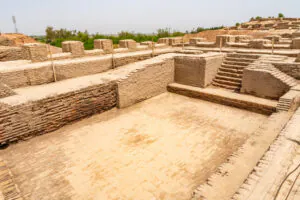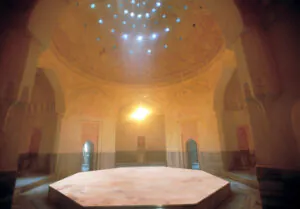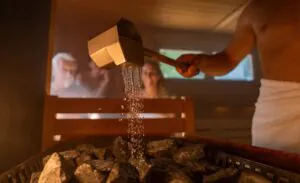- All packages
- Gift vouchers
- Spa Offers
- Look Inside
- Treatments
- Food menu
- Memberships
- Blog
- About us
- Contacts
+44 7 458 386 519
+44 (0) 208 189 9777
404-406 Chiswick High Road, London, W4 5TF
The History of the World’s Public Baths
Bathing traditions and bathing rituals from around the globe
The world history of baths is a fascinating story spanning the bathing ceremony of many different cultures. Bathing has always been an important part of civilisation, but private bathing (for much of the population is a relatively recent innovation.
For most of the world’s bath history, bathing was a social affair, conducted in a public bath house, with only the wealthiest in society having access to private bath houses.
The evolution of baths, therefore, is as much a dive into communal living and cultures as it is a study of bathroom history.
In this article, we will take a step back in time, and go on a short journey of discovery of ancient baths and bathing rituals. We will stop off at several locations and look at:
- The world’s most ancient bath
- Ancient Egyptian bathing
- Ancient Roman bathing
- Ancient Greek bathing
- Turkish baths
- Tibetan bathing
- Finnish sauna
- Russian banya
So, join us now in this intriguing tour of some of the world’s earliest known public baths and bathing rituals.
The World’s Most Ancient Bath

Probably the most ancient bath (that we know of so far) is located in the Indus Valley, in what is now Pakistan. Built around 2500 BC (or maybe even earlier), it was discovered in the lost city of Mohenjo-daro and was finally excavated at the beginning of the 20th century. The assumption is that the location was once a temple, as bathing in these early times may have been associated with religious ceremonies.
This is an interesting start to our journey – not least because of the age of the site, but also the fact that, in many cultures to this day, public bathing still involves bathing rituals (not necessarily religious) and bathing traditions. In fact, you will discover that this is a common theme that runs through much of the world history of baths, includingFinnish saunas and the Russian banya experience, even in modern times.
Ancient Egyptian Bathing

Ancient Egyptian baths (also: rasul/rhassoul) were treatment spaces that were designed around a steam room. The usual design was a building on two floors, with the lower floor used for heating and generating steam. The heat would rise and warm up the floor above (the treatment room). Steam also made its way up through a hole set in the ceiling of the lower chamber.
Egyptian baths were set at a lower temperature but with high humidity (around 40°c and 80% respectively).
Treatments sound remarkably modern – albeit using different materials. Beeswax was used as a soap, for cleansing, and they even had body scrubs to treat the skin! At Banya No.1 we like to use salt and honey for the best skin treatment; in ancient Egyptian baths, they used sand infused with oils.
Ancient Roman Bathing

The ancient baths in Rome seem to be as well-known as Julius Caeser himself, thanks to their portrayal in popular films and other media, but this is not just a modern phenomenon. Roman baths and public bathing were a vital part of ancient Roman society and at the time, the Romans were world leaders in building and using bath houses. Even the wealthy who had private bath facilities would continue to also use the public baths, such was their importance in Roman culture.
Roman baths were not just for bathing, they were a place to meet for all kinds of reasons while you bathed. Some were huge and could accommodate 5,000 and even 6,000 people. They were a place to meet others, socialise, and even conduct business meetings. Public Roman baths were a part of everyday life for the Romans.
As their empire spread, so they took with them their bathing culture and introduced it to other nations. Even the furthest reaches of the Roman Empire were influenced by their love of public bathing. The western UK city of Bath is so-named purely because it is the site of an ancient Roman Bath – although, at the time, the Romans named the town Aquae Sulis (meaning The Waters of Sulis).
The Romans built a large bathing and temple complex at the site around AD60. Built over a natural hot spring, the Roman baths in Bath are still there to this day and can still be visited (but not bathed in).
Ancient Greek Bathing
As in Rome, baths in Greece were a central part of life and society – and among many ancient Greek ruins, we can still find areas dedicated to bathing, complete with sophisticated drainage systems.
Greek baths were often built around gymnasiums and sports arenas and would be used for both hygiene and relaxation. Many of the large public baths were often supplied with cold water and were more akin to swimming pools, but the Greeks eventually developed a system of smaller baths in heated rooms, often utilising several rooms with baths of different temperatures. From this point, as they became more “user-friendly”, they emerged as the focus of social life, and facilities were extended to give additional spaces for social and business talk, food stalls and other amenities. Some even had showers.
Palaces in Greece have been discovered with whole areas dedicated to bathing; in fact, the earliest bathtub that we know of was found in the Queen’s Bathroom in the palace at Knossos, Crete – which dates to around the mid-2ndmillennium BC.
Turkish Baths

Turkish baths – hammams – most likely developed from the practices of Roman bathing and reached Turkey sometime around 600 AD, and were certainly very popular by 660 AD. From here, they became firmly embedded into Muslim culture. Hammams – steam rooms – became places for the celebration of major life events, with bathing rituals being incorporated into birth and wedding ceremonies.
Indeed, one of the characters in the story One Thousand and One Nights from the 10th century is quoted as saying “No city is complete without its own hammam”.
By the 12th century, there were 57 public baths in the city of Damascus alone; Aleppo was host to 195 of them. At the time, the hammam was most often just one large steam room without windows, but a glass ceiling for lighting. You would remove your clothing, and wrap yourself in a towel before entering.
Turkish baths, as with many other cultures before and since, became places of relaxation and socialising, and have developed somewhat. Today, they are usually divided into three areas: the steam room, a warm bathing room and a cool room. The steam room is maintained at around 40°c but with very high humidity – sometimes as much as 95-100%. Natural cleansing products are used (both before and after steaming) such as soaps, clays and other lotions.
Tibetan Bathing
Tibetan bathing developed as a means of promoting health and healing, and not as a means to get clean.
A fire was constructed in a hole in the ground and burned to ashes before being covered with wet tree branches (cedar, pine or spruce). The person would then lie on the branches, covered with a blanket, until they could no longer endure the heat. After bathing in this way, the body would be rubbed with medicinal ointments and aromatic oils.
Today, the ritual has changed somewhat but is still centred around health and healing. Tibetans hold a bathing festival each year in the 7th month of the Tibetan calendar. For Tibetans, this annual ritual is an important part of their self-care. Lasting for one week, tens of thousands of men and women go to rivers and lakes to bathe in the relatively warm waters. Due to the history of the event, they believe that they are not only cleansing the body, but also washing away any potential disease.
Finnish Sauna

Finnish saunas are as popular today as they have always been in their history, with around one sauna in the country for every 2-3 people, with most taking a sauna at least once a week.
The origin of the history of the Finnish sauna is unclear, but dates back to at least the 12th century when it was a smoke sauna heated by a wooden stove. After taking their heat bath, the people would often cool down outside in the snow, or even jump into the freezing waters of a lake.
The oldest Finnish public bath house that is still in use was built as recently as 1906 and is a smoke sauna in the city of Tampere in the south of the country.
Finnish sauna is deeply embedded in the culture of the country; some Finnish prisons even have them, as the ritual is such an important part of their lives. Finnish sauna is an integral part of the people’s health regime.
Although other, older, cultures had steam baths and public baths, it is interesting to note that we get the word ‘sauna’ from Finland. Sauna is the Finnish word meaning “a hot steam bath” and comes from the steam created by pouring water over heated stones.
Russian Banya

The Russian banya was firmly established in the Slavic culture by the 900s, although they do go back much further in history. The Russian banya is older even than Russia itself, and has been a consistent part of the culture through all the other changes that have occurred over the centuries since.
Throughout almost all of Russian history, the banya has been enjoyed by all people of all statuses, with public bathsaccessible to all. For many, a family and friends visit to a banya became a Sunday tradition, which for many continues to this day. But it has always been seen as a part of the Russian essential health regime and not just for relaxation.
The public bath house was even encouraged by Peter the Great when he founded the city of St. Petersburg; Peter himself was a great believer in the therapeutic benefits of the Russian banya and wanted to ensure the public always had access to them.
The Russian banya experience began in people’s homes, but over time developed into larger buildings designed for communal use. From here, the banya experience became a social event and Russians for centuries have associated banya with relaxation and socialising, and health.
With several treatment types all typical to a Russian banya, the focus on health and relaxation is what the banya experience is still all about today.
At Banya No.1, steam bathing with essential oils and aromatics is still a vital part of the experience, as are the other skin and health treatments that are available.
Today’s Public Baths
As we have seen, public baths have emerged from different cultures at different times and in many different ways – but one thing is constant; they have all survived and remain today just as important and relevant as they were when they began.
In other words, the evolution of baths may have changed their presentation a little, but at their heart, they are the same as they were thousands of years ago, and for one important reason – they matter.
Whether for cultural reasons or for health reasons – and usually both – people understand the benefits of the social bath house and the bathing tradition. The bathing ceremony is not just there because it is pleasant (although it is) – it has an impact on our physical and mental health. Whether it be from the steam of the banya, or various skin treatments, or even just relaxing and socialising with friends and family, the benefits to our health are well known and well documented.

Banya is beneficial – but it is also a lot of fun. It is simply the best way to spend a few hours away from the stresses of everyday life.
The ancients knew it – and so should you.
Banya and Banya No.1 are registered trademarks.
© Copyright 2012-2024 Banya No.1
We use cookies and similar technologies to remember your preferences, measure effectiveness of our campaigns, and analyze depersonalized data to improve performance of our site. By choosing "Accept", you consent to the use of cookies.

